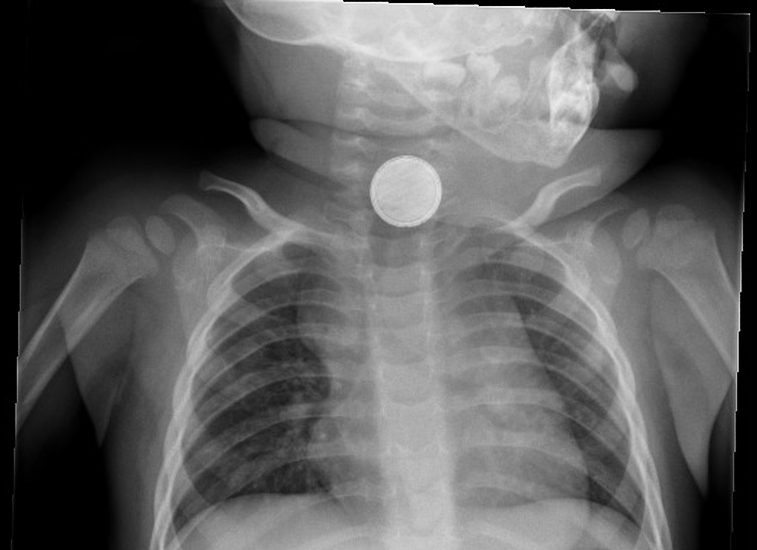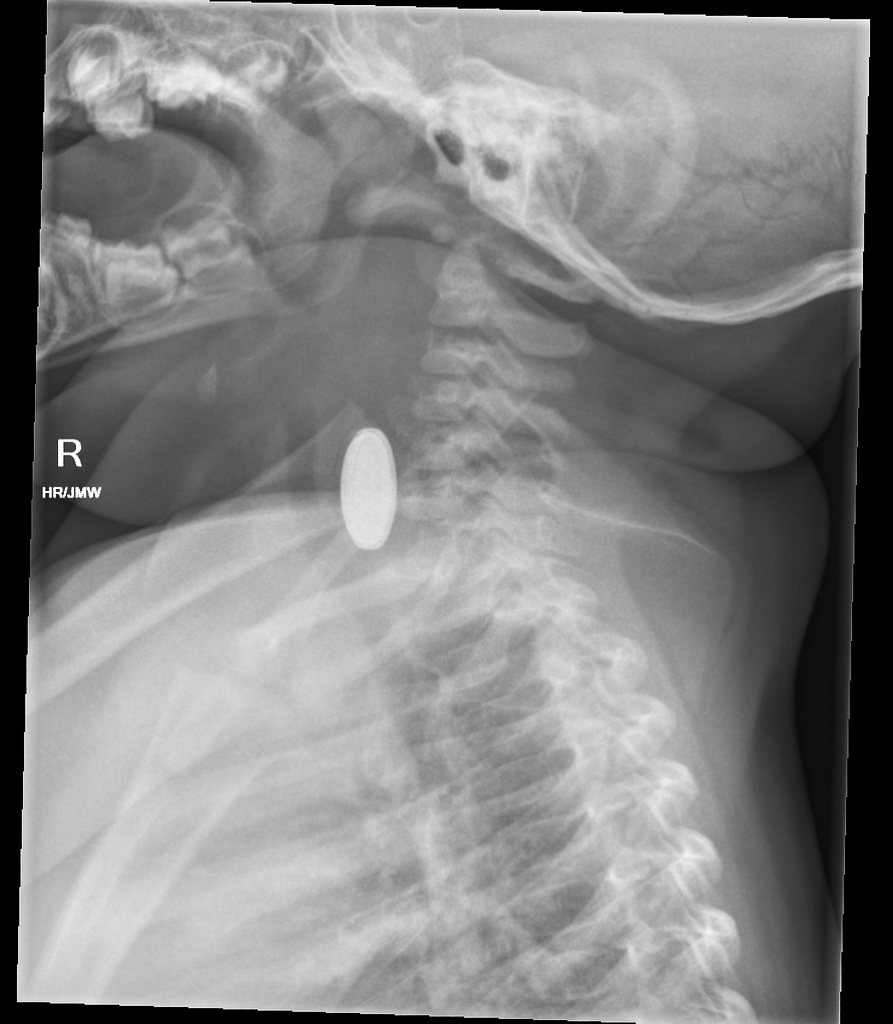By Dr. Free N. Hess
How many remote control devices do you have in your home? Are they scattered all over and sometimes even found on the floor or between the couch cushions? Have you ever dropped one and had the battery compartment break open, spilling its contents at your feet?
Do you have watches hanging around on the bedroom end table or in a drawer somewhere?
How about small battery operated toys? Most of us with kids have tons of those!
Singing greeting cards? Flashing jewelry? Small calculators? A bathroom scale? Hearing aids? Key fobs? Thermometers? Cameras? Battery operated candles?
If you have any of these things in your home, then you also have button batteries, which can be a very real danger to your kids. Every year, the majority of the more than 3500 people who swallow button batteries are children. The majority of these batteries will pass through the gastrointestinal tract without issue and will eventually be expelled in the stool, but occasionally they can become lodged in the esophagus, which can lead to death or serious injury. There have been 245 reported cases of severe esophageal or airway burns and 62 deaths due to button battery ingestion. Read on to learn more about why button batteries pose such a risk to children and what you can do to protect your loved ones.
Why Are Button Batteries So Dangerous, Especially In Young Children?
Kids are curious by nature and they are notorious for putting random objects in their mouth, ears, nose, and anywhere else one can imagine. Many of the objects that kids ingest are of minimal concern, but button batteries are among the most dangerous, primarily if they become lodged in any portion of the esophagus (food pipe) or trachea (windpipe). Due to the narrow diameter of the esophagus and trachea, swallowed button batteries are prone to become lodged in these areas. Once they become “stuck”, they can generate a current that chemically interacts with water molecules to produce hydroxide, which can damage human tissue. Further, the battery itself can leak its contents, which can also damage the delicate lining of the esophagus and trachea, resulting in chemical burns that can “eat right through” tissue. While a swallowed button battery that passes through the esophagus is much less likely to cause injury (the movement through the stomach and intestines tends not to allow it to stay in one place long enough to cause focal damage), successful passage through the bowels should still be monitored.

(Photo courtesy of Radiopaedia)

(Photo courtesy of Radiopaedia)
How Do You Know If Your Child Has Swallowed a Button Battery?
Symptoms that can suggest button battery ingestion include:
- Difficulty breathing
- Acute onset of coughing, wheezing, choking or gagging
- Drooling
- Vomiting
- Chest Discomfort
- Difficulty swallowing, decreased appetite, refusal to eat or drink
- Abdominal pain
Most battery ingestions resulting in serious injury are not witnessed, so always consider this possibility if you find your child playing with a device with a missing button battery. In some cases, children may have no symptoms at all initially.
What Should You Do if You Suspect Your Child Ingested a Button Battery?
- If you suspect that your child has swallowed a button battery (or placed one in the ear or nose that you cannot safely retrieve) you should call the Poison Control Center (1-800-1222-1222) and head immediately for the nearest Emergency Room, as burns and life threatening complications can occur if they are not removed within 2 hours. DO NOT wait, even if they have no symptoms.
- Give your child 10ml (2 tsp) of honey (only if greater than 12 months old) every 10 minutes until for up to 6 doses while you are seeking further care.
- If the ingestion is thought to have occurred more than 12 hours prior, then DO NOT give honey, as perforation of the esophagus may already be present.
- DO NOT delay transport to the ER to give honey.
- Other than giving honey, DO NOT give the child anything by mouth until advised otherwise by the Poison Control Center or the physician in the Emergency Department.
Why Do We Recommend Giving Honey If a Button Battery Ingestion is Suspected?
- Honey coats the battery and prevents local generation of hydroxide. This delays burns to the surrounding tissues but does not prevent it.
But remember:
- Honey is only recommended in children over 12 months of age.
- Giving honey should never delay transport to the ER.
What Happens Once You Bring Your Child To The ER For Suspected Button Battery Ingestion?
- Your child will have his/her vital signs checked, a complete physical exam will be done, and an X-ray will be obtained.
- If a button battery is identified within the esophagus, the physician will then consult the appropriate specialty for removal and will possibly consult with The National Battery Ingestion Hotline (1-800-489-8666).
- If the battery has passed through the esophagus and your child is asymptomatic, treatment may consist of watchful waiting depending on the specific situation. Your care team will discuss this in detail once the decision is made.
What Can You Do To Prevent Button Battery Ingestion?
- Never leave ANY batteries out in the open or within reach of children.
- Check all devices in your home and assure that those containing batteries are secured shut. If easily opened or if there is a possibility of opening if the object is dropped, secure it with strong tape or place it where children cannot access it.
- When possible, only purchase devices with battery compartments that are secured with a screw or child-resistant locking system.
- Alert family members and caretakers of this danger and request that they secure their home as well.
- Do not insert or change the batteries in your devices in front of children. They love to mimic adults and may try to “fix” things themselves.
Batteries are everywhere. A little knowledge and preparation can make all the difference in avoiding serious injuries.
References:
https://www.poison.org/battery
https://www.aap.org/en-us/advocacy-and-policy/aap-health-initiatives/Pages/Button-Battery.aspx
